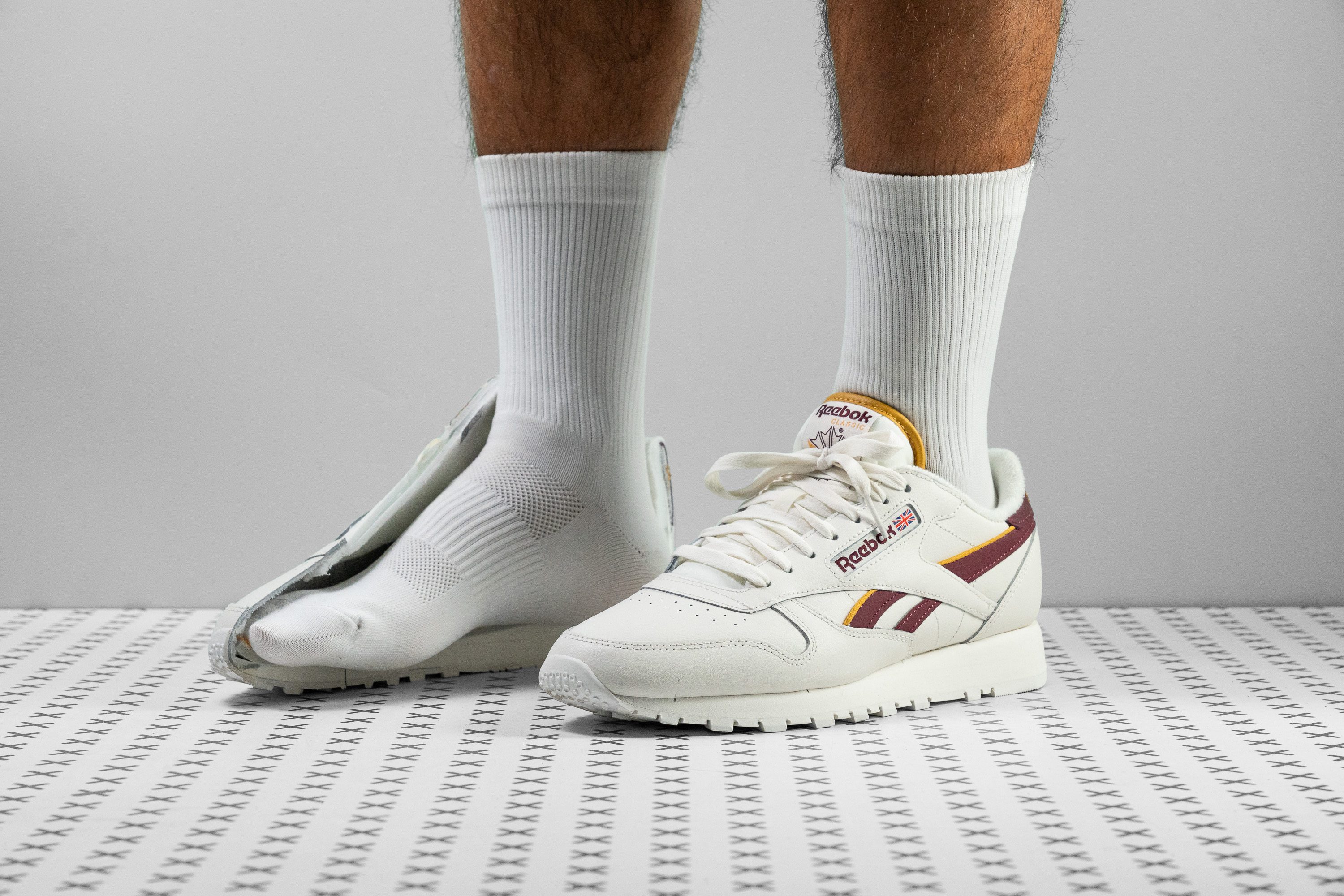Our verdict
- Top pick in best trainers for overpronation
- Top pick in best trainers for flat feet
Pros
- Mighty plush
- Great investment
- Leader of the pack
- Supportive
- Aesthetically well-rounded
- Enduring
- Affordable
Cons
- Downgraded upper
- Dirt-magnet
Audience verdict
- Top 1% in Reebok Classics trainers
Comparison
The most similar trainers compared
+ + Add a shoe | |||||
|---|---|---|---|---|---|
| Audience score | 91 Great! | 89 Good! | 89 Good! | 90 Good! | |
| Price | £80 | £130 | £80 | £95 | |
| Style | ClassicRetroSporty | ClassicDadRetroSporty | RetroSporty | DadRetroSporty | |
| Shock absorption | - | High | Moderate | Moderate | |
| Energy return | - | Moderate | Moderate | Moderate | |
| Traction | - | High | Moderate | Moderate | |
| Breathability | Warm | Warm | Breathable | Warm | |
| Weight lab | 11.4 oz / 323g | 13.5 oz / 383g | 11.1 oz / 315g | 12.8 oz / 364g | |
| Size | True to size | True to size | True to size | True to size | |
| Midsole softness | Firm | Firm | Firm | Firm | |
| Material | Leather | MeshSuede | LeatherMesh | MeshSuede | |
| Season | SpringFall | SpringFall | SpringFall | SpringFall | |
| Inspired from | Running | Running | Running | Running | |
| Width / fit | Medium | Medium | Medium | Medium | |
| Toebox width | Narrow | Medium | Medium | Medium | |
| Leather/suede quality | Real leather | Real suede | - | Real suede | |
| Toebox durability | Decent | Decent | Decent | Good | |
| Heel padding durability | Bad | Decent | Decent | Good | |
| Outsole durability | Good | Good | Bad | Good | |
| Heel stack lab | 35.7 mm | 35.4 mm | 35.8 mm | 27.7 mm | |
| Stiffness | Stiff | Stiff | Moderate | Flexible | |
| Tongue padding | Average | Average | Average | Average | |
| Drop lab | 13.6 mm | 11.1 mm | 15.6 mm | 9.9 mm | |
| Forefoot | 22.1 mm | 24.3 mm | 20.2 mm | 17.8 mm | |
| Removable insole | ✓ | ✓ | ✓ | ✓ | |
| Heel tab | None | None | None | None | |
| Torsional rigidity | Moderate | Moderate | Moderate | Moderate | |
| Heel counter stiffness | Stiff | Moderate | Stiff | Stiff | |
| Reflective elements | ✗ | ✓ | ✗ | ✗ | |
| Closure | Laces | Laces | Laces | Laces | |
| Top | Low top | Low top | Low top | Low top | |
| Ranking | #56 Top 47% | #84 Bottom 30% | #87 Bottom 28% | #65 Bottom 46% | |
| Popularity | #81 Bottom 33% | #10 Top 9% | #66 Bottom 45% | #69 Bottom 42% |
Who should buy
We recommend the Reebok Classic Leather to:
- Retro aficionados looking for an iconic and timeless kick from the Reebok Classic collection
- Fashion-minded individuals looking for a sneaker that's as easy on the eyes as it is on the foot
- Anyone in the market for a casual shoe for walks around that's neutral enough to go with most outfits

Who should NOT buy
Consider the Reebok Club C 85 Vintage, which has a leather upper that is easier to wipe-clean than the one on the Reebok Classic.
The Classic Leather's durability didn't impress us during testing. For a kick with a tougher shell, opt for the Samba OG instead.
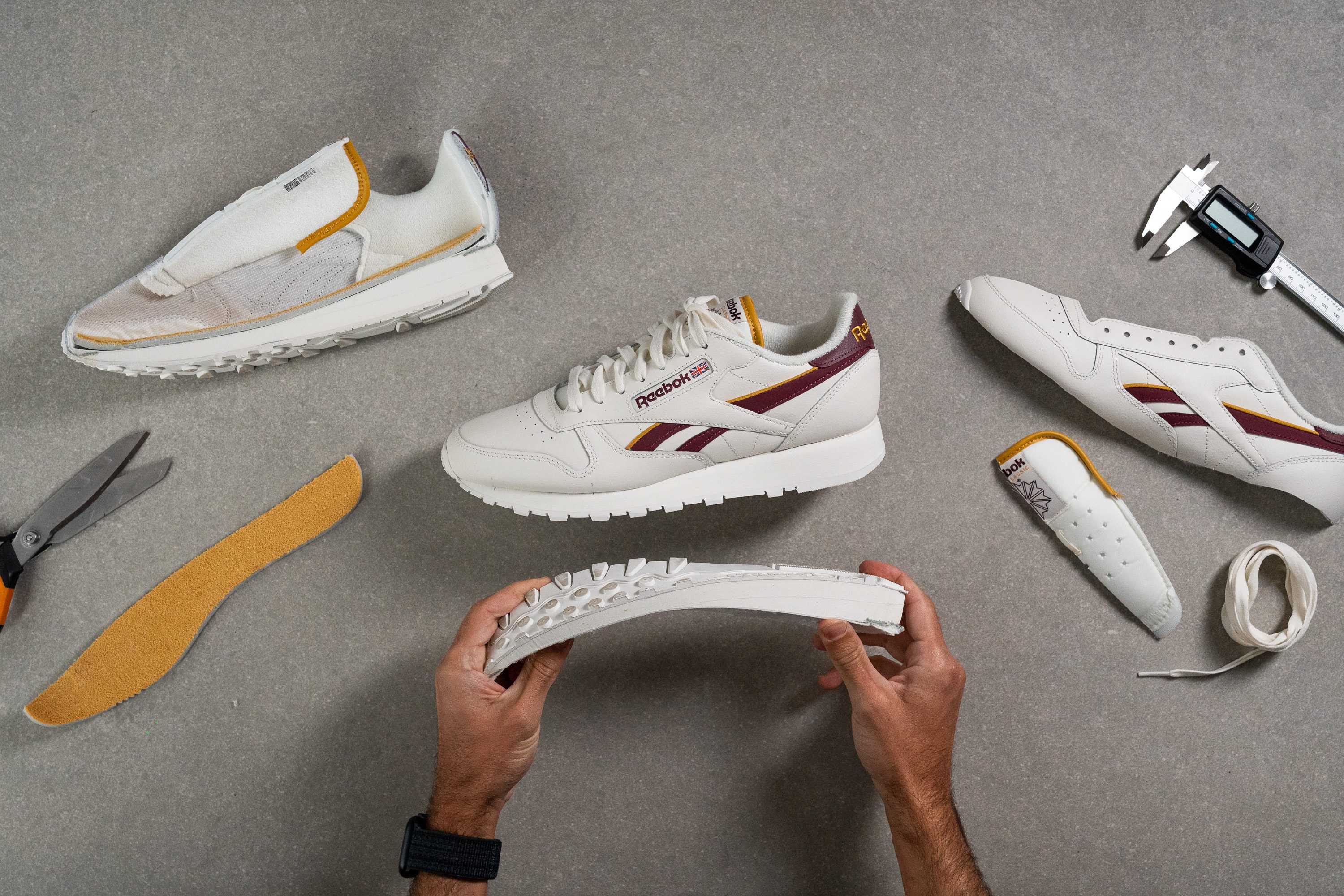
Cushioning
Heel stack
Using our calliper, we measured the Classic Leather's stack to be 35.7 mm thick at the heel.
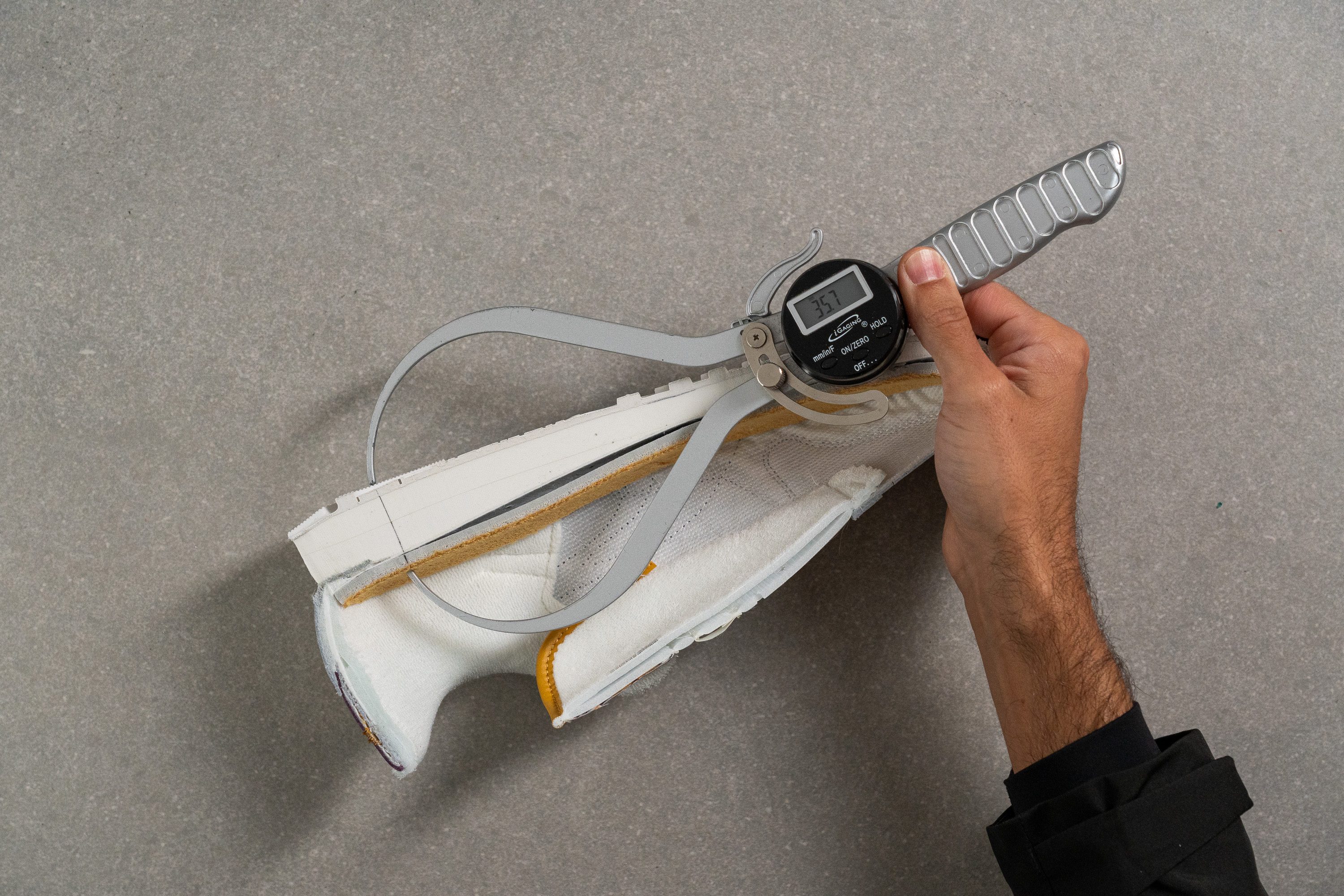
This is higher than our current lab average and provided us with good impact dampening for protective landings in this shoe.
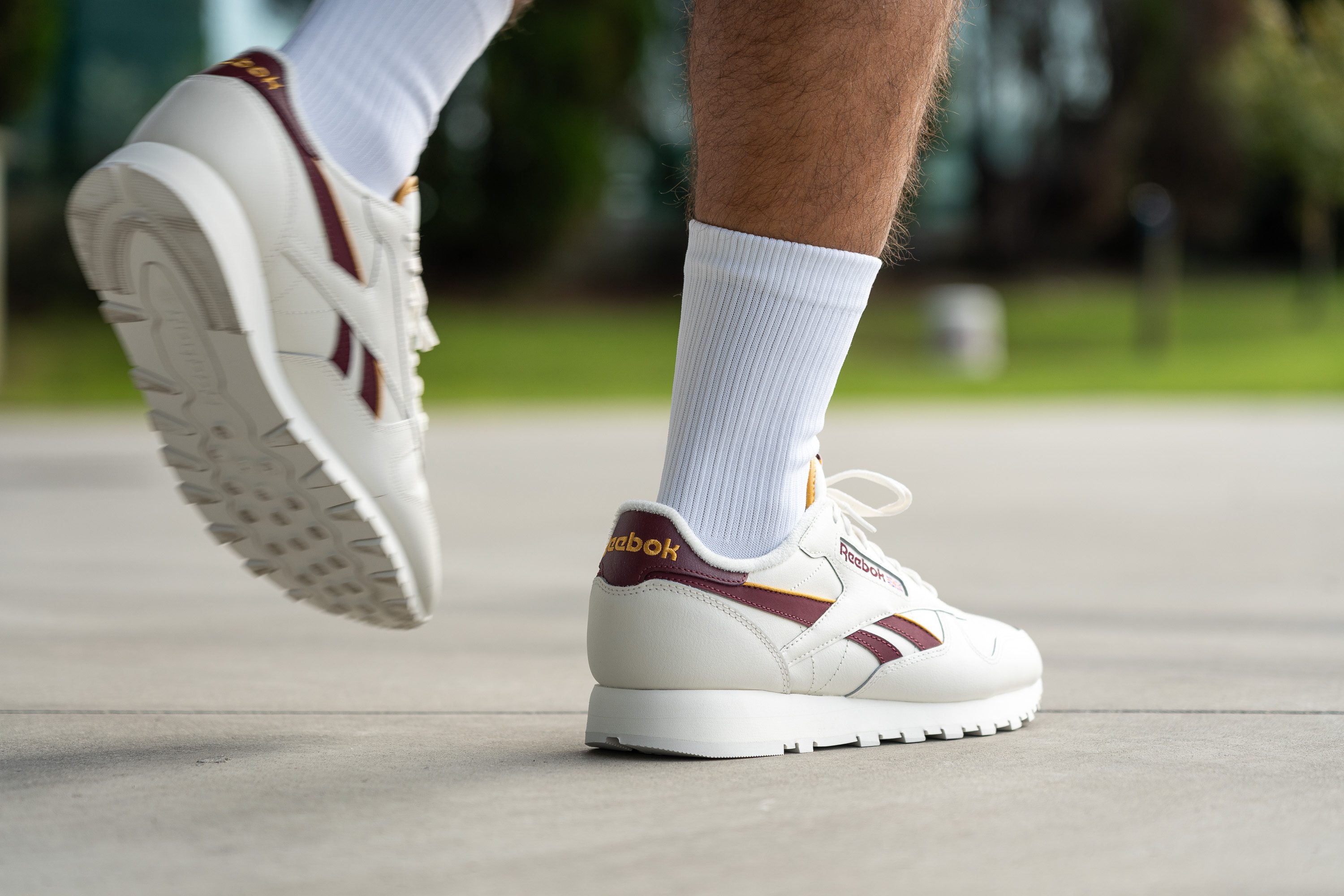
| Classic Leather | 35.7 mm |
| Average | 30.7 mm |
Forefoot stack
The Classic Leather's stack is also a little higher than average at the forefoot, measuring 22.1 mm thick at the forefoot. This also gives us a good amount of foam underfoot while still allowing for an intuitive sense of the ground below for added stability.
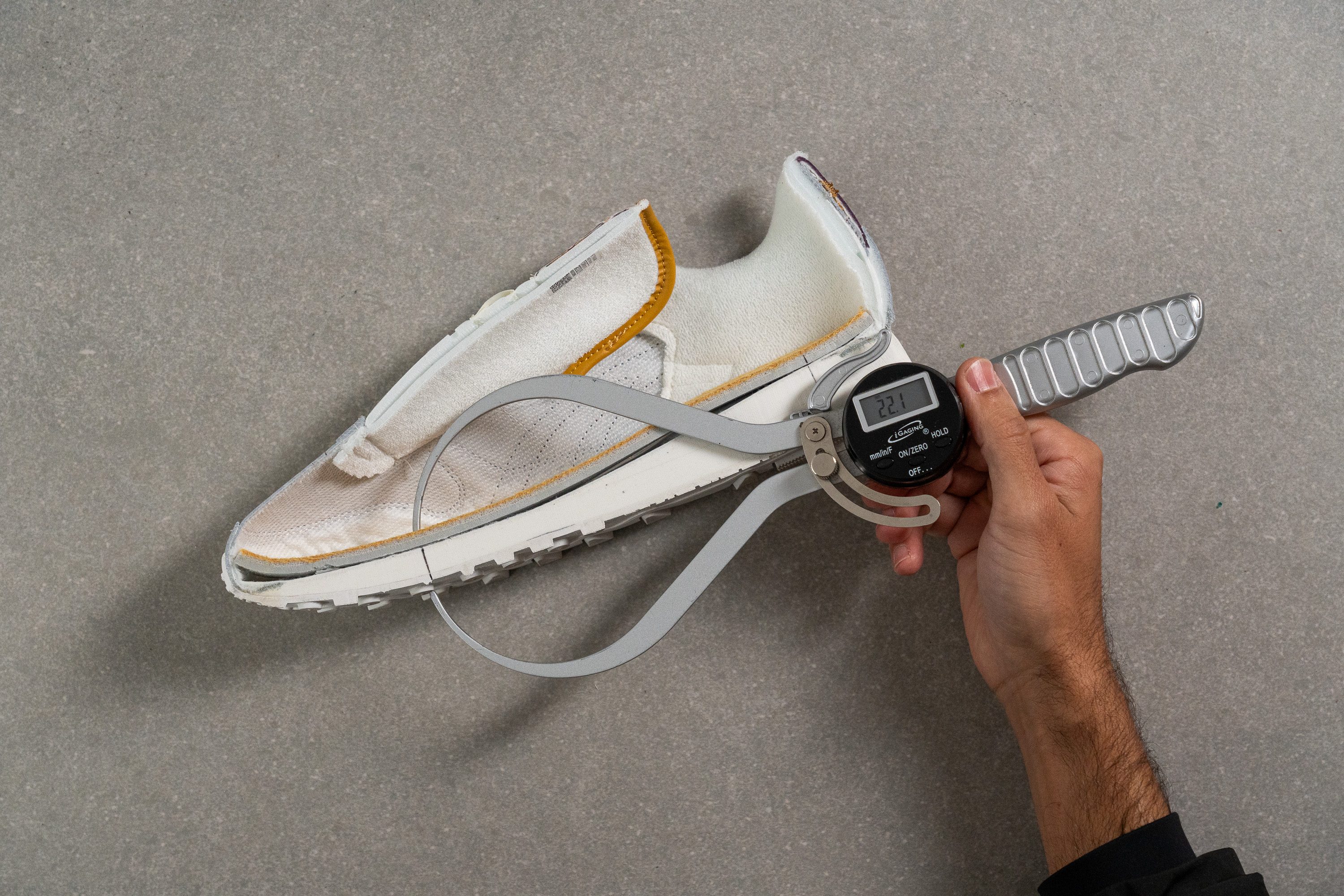
| Classic Leather | 22.1 mm |
| Average | 19.5 mm |
Drop
The difference in these stack measurements leaves the Classic Leather with a slightly steeper-than-average heel drop of 13.6 mm. This still feels rather natural and provides us with a good mix of an elevated heel and a natural sense of the ground below.
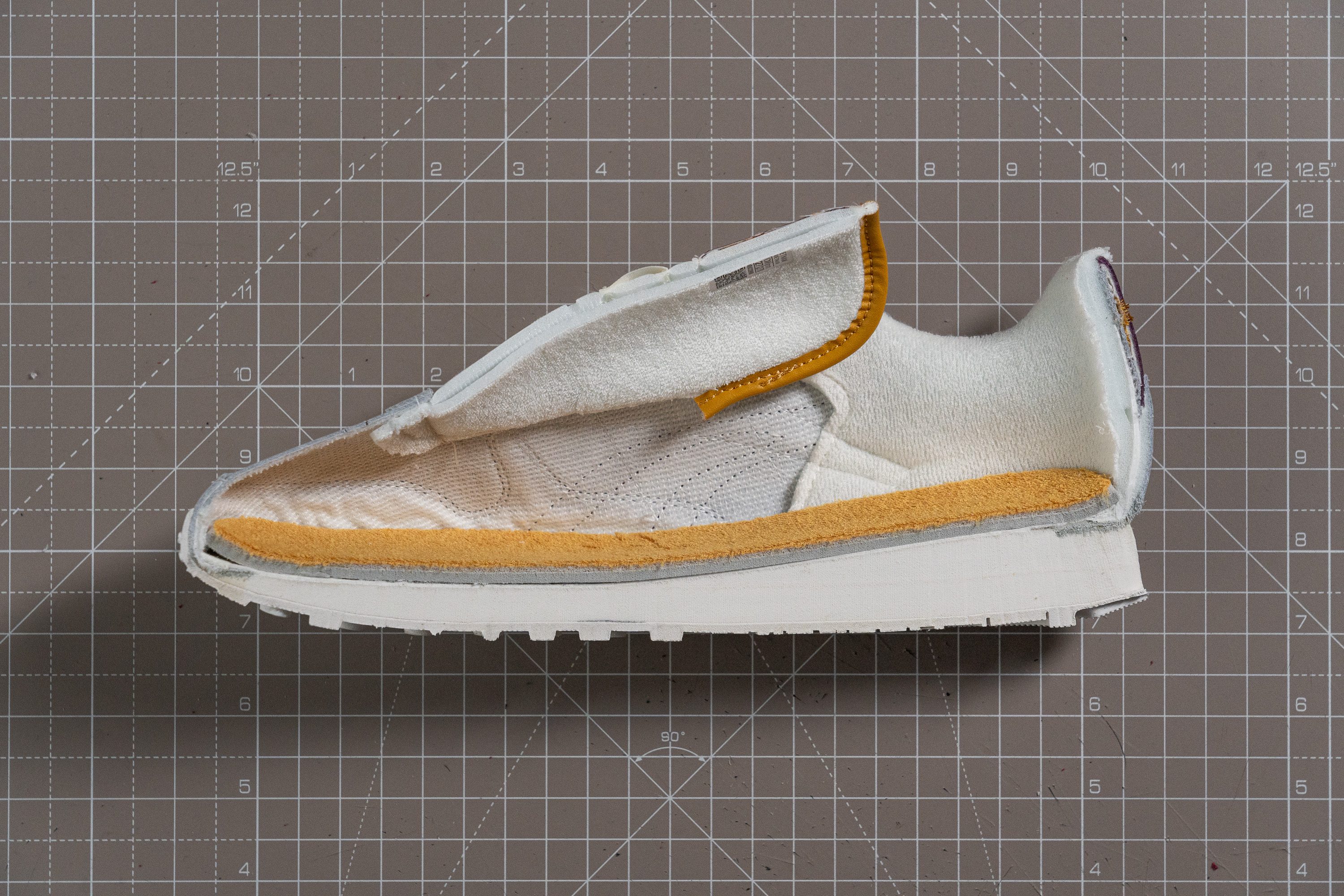
| Classic Leather | 13.6 mm |
| Average | 11.2 mm |
Midsole softness
Pressing our durometer against the Classic Leather's midsole gives us a firmer-than-average reading of 35.1 HA.
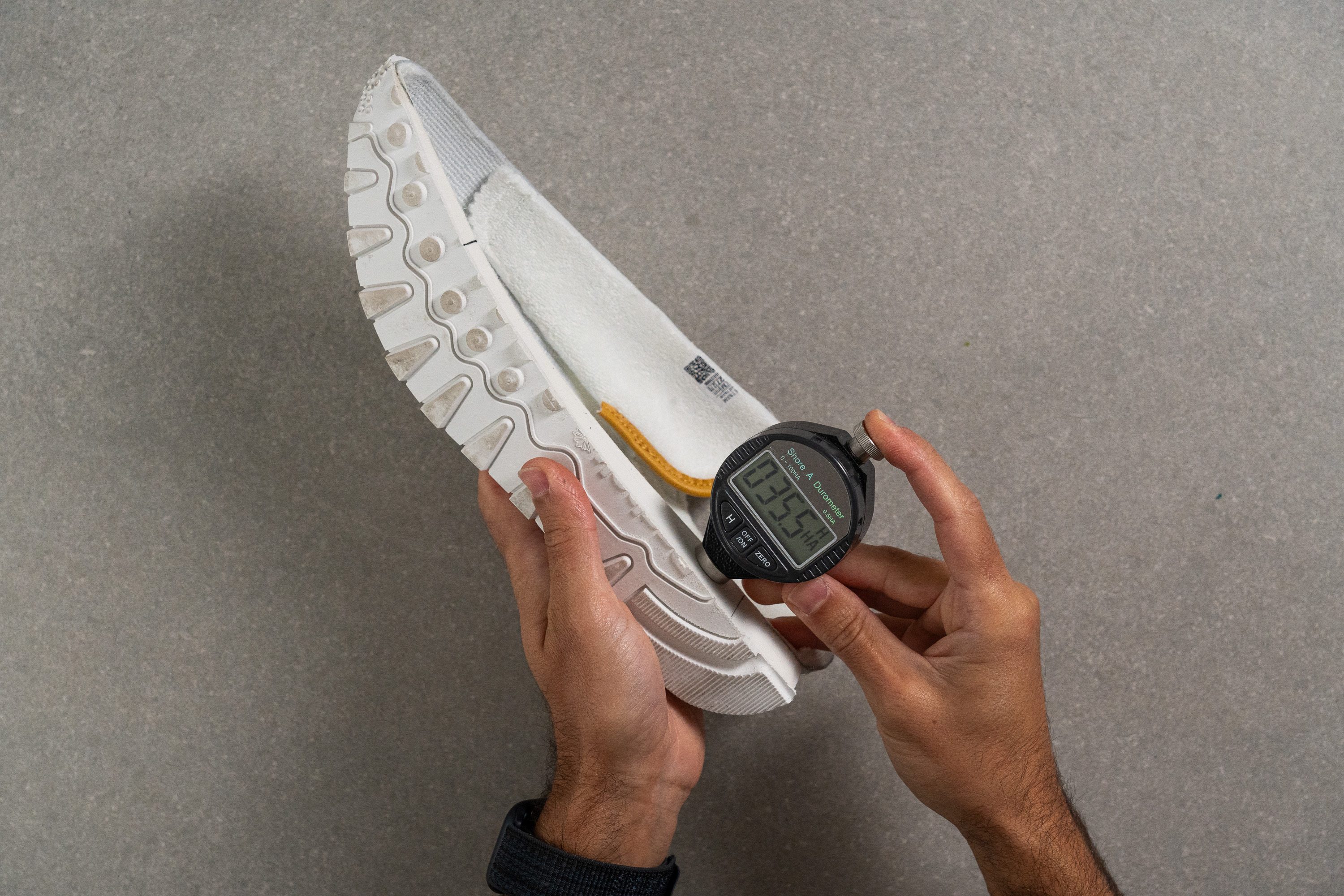
This is quite firm and, while it does offer adequate impact protection, doesn't feel very well-cushioned underfoot. For a sneaker with a decidedly plush ride, we recommend looking into the New Balance 9060 instead.
| Classic Leather | 35.1 HA |
| Average | 28.6 HA |
Size and fit
Size
Reebok Classic Leather fits true to size (262 votes).
Width / Fit
The Reebok Classic Leather looks snugger towards the toes while the midfoot feels standard.
Having created a mould of the shoe's interiors using gel, we measured the widest part at 92.3 mm. While this is on par with the average of D medium trainers, it gets notably narrower towards the front.
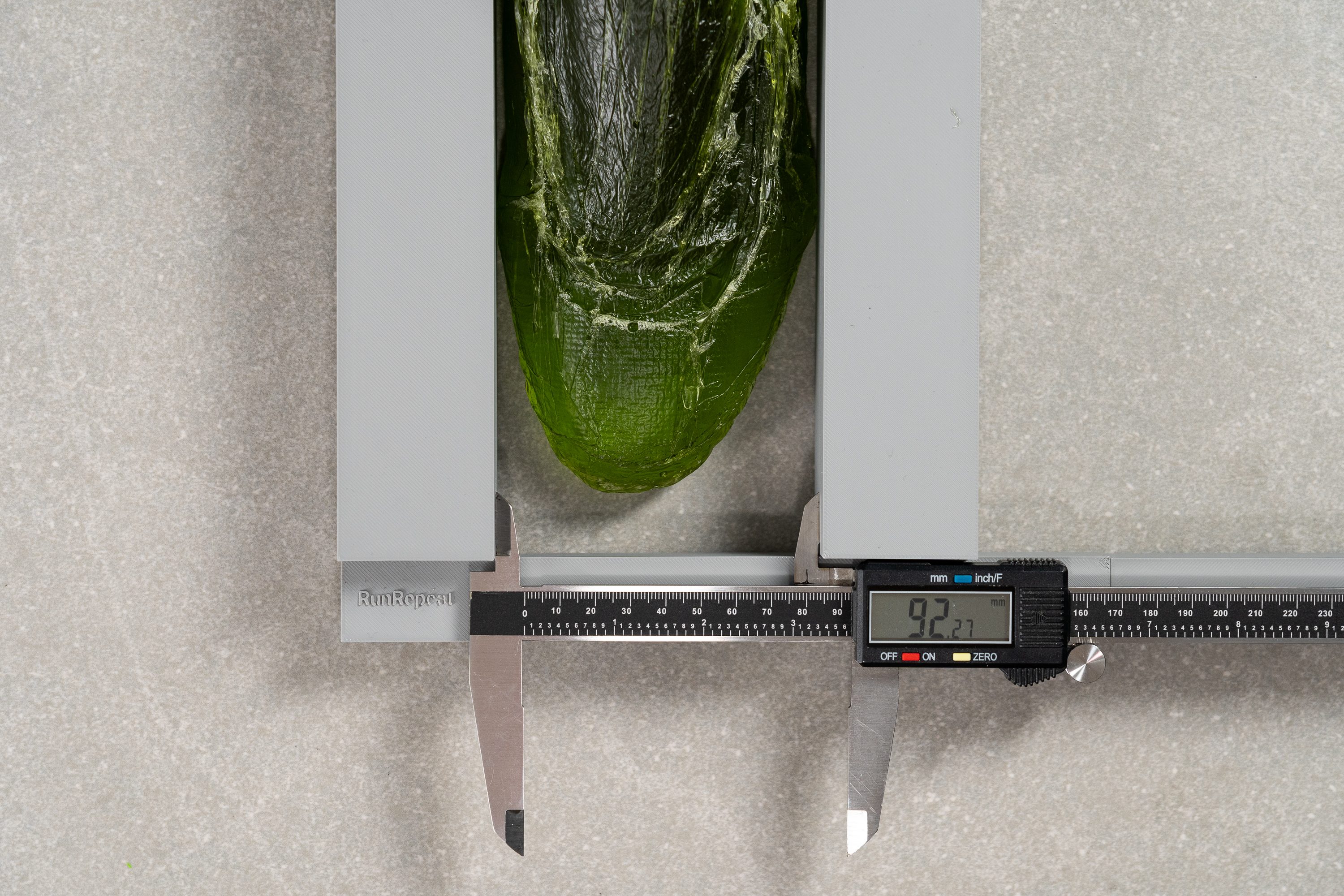
| Classic Leather | 92.3 mm |
| Average | 92.5 mm |
Toebox width
Our calliper recorded a significantly narrower reading of 63.9 mm near the big toe, 5 mm narrower than the average. This limits the shoe's target audience to people with slimmer feet. Folks with wide feet and bunions should stay away from this Reebok silhouette.

| Classic Leather | 63.9 mm |
| Average | 68.9 mm |
Toebox height
The shoe's toebox height is also limited showing a below-average toebox height of 25.2 mm.
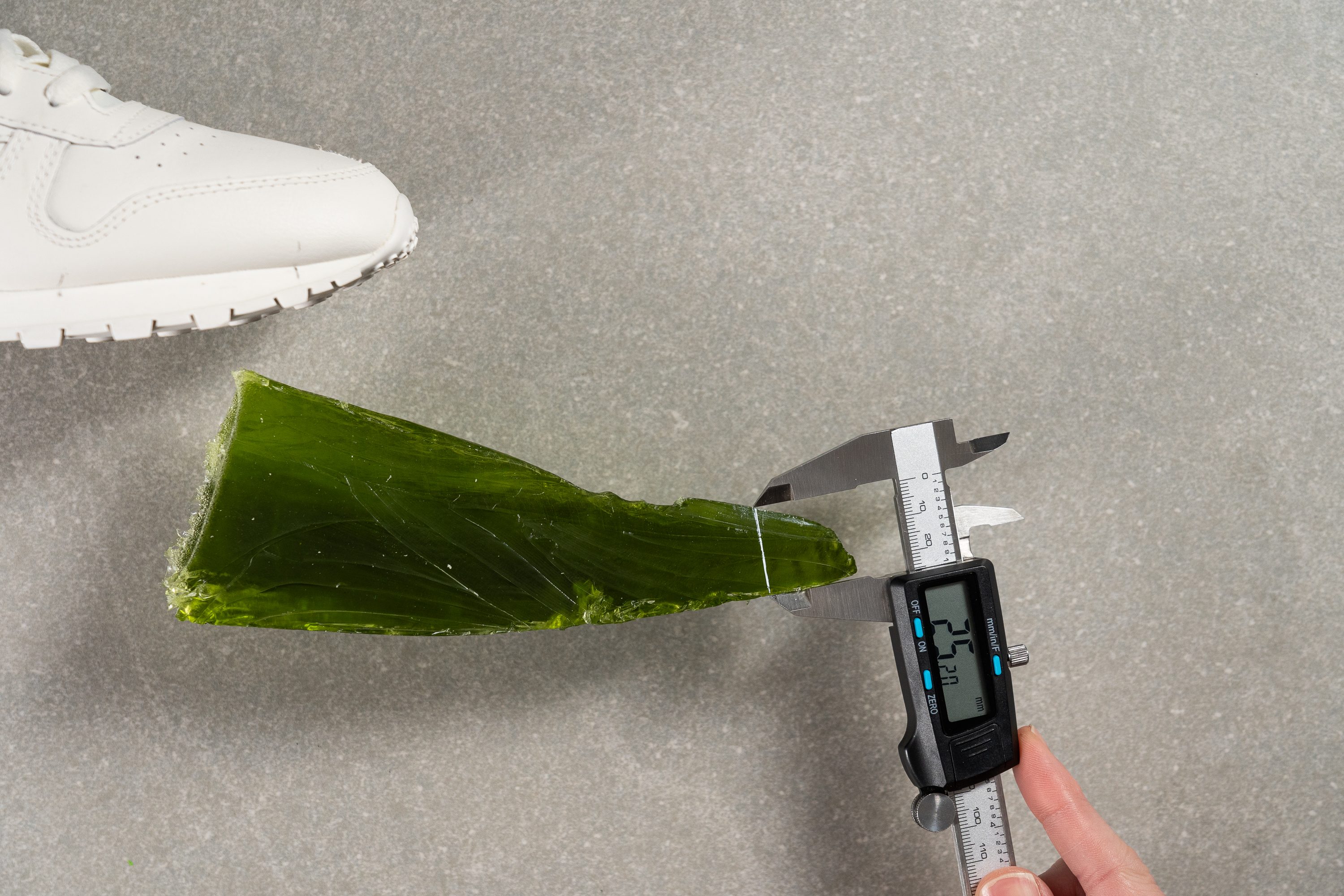
| Classic Leather | 25.2 mm |
| Average | 27.8 mm |
Flexibility / Stiffness
To test the stiffness of the Classic Leather, we secured it to our workbench and measured the amount of force needed to bend the shoe to 90 degrees. With a result of 26.8N required to torque the shoe to the desired point, the Classic Leather is slightly less flexible than average.
This isn't too stiff, however, as the shoe is still able to bend along with the natural flexion of our foot quite comfortably and doesn't feel too rigid, even after extended use.
This test follows an older methodology, which is why you don't see recently tested shoes in the chart. Results from different methodologies can not be compared.
| Classic Leather | 26.8N |
| Average | 23.3N |
Weight
The Classic Leather is lighter than the average sneaker, tipping our scale at only 11.4 oz (323g). This feathery disposition makes the Classic Leather feel super comfy on the foot, even when walking around for extended periods of time.
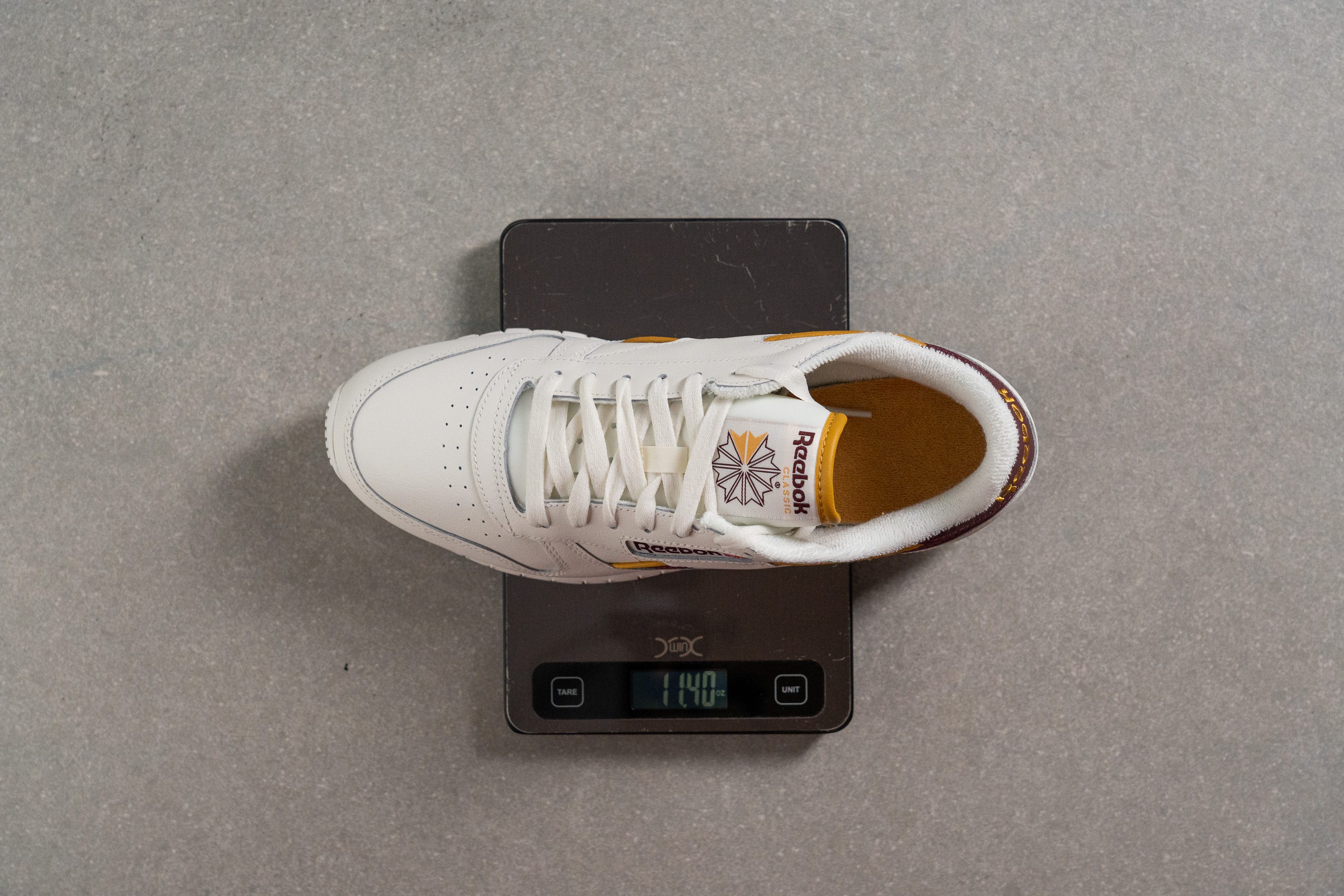
| Classic Leather | 11.4 oz (323g) |
| Average | 13.8 oz (390g) |
Breathability
Unsurprisingly for a leather shoe, the Classic Leather didn't fare too well in our breathability test. As we can clearly see from the footage, the smoke from our smoke machine is hardly able to escape the shoe, with mere wisps floating out of the shoe's tongue. This earns the shoe the lowest score of 1 out of 5, meaning that it will certainly feel toasty come summertime.
Inspecting a backlit cross-section of the Classic Leather's upper further confirms our conclusion as it blocks any light from shining through.
| Classic Leather | 2 |
| Average | 3 |
Stability
Lateral stability test
While the Classic Leather does roll a bit as we shift our weight from side to side in the shoe, we still felt quite well-planted and balanced while testing this shoe.
Torsional rigidity
We faced an above-average level of resistance as we attempted to bend and twist the Classic Leather in our hands. This leads us to give it a torsional rigidity score of 4 out of 5. This means that the Classic Leather mitigates how much our foot is able to roll laterally during our stride, thus keeping the base nice and level to promote stable landings.
| Classic Leather | 4 |
| Average | 3.6 |
Heel counter stiffness
The heel counter is similarly stiff in the face of our manual manipulations, leading us to give the Classic Leather another 4 out of 5. As such, the shoe holds our foot in place securely and provides a strong rearfoot lockdown that prevents any excessive lateral movements as well.
| Classic Leather | 4 |
| Average | 3.2 |
Midsole width - forefoot
The Classic Leather's midsole isn't quite as wide as average at the forefoot, measuring only 103.3 mm wide according to our calliper measurements.
This gives the shoe its nimble and agile feeling underfoot while still providing us with enough platforms to keep us feeling surefooted throughout our stride.
| Classic Leather | 103.3 mm |
| Average | 108.9 mm |
Midsole width - heel
The midsole is closer to the average range at the heel which is 80.9 mm wide according to our calliper measurements.
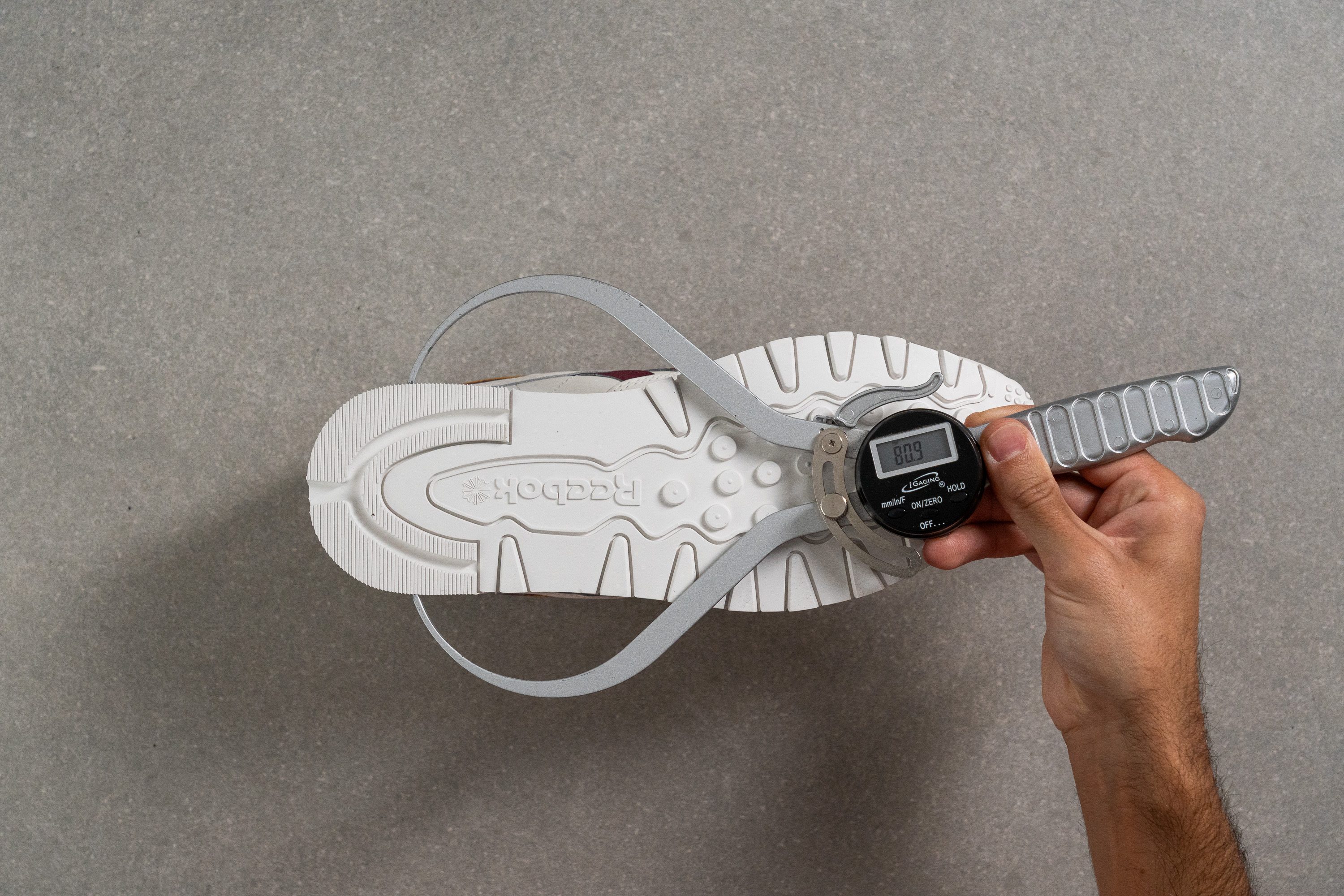
| Classic Leather | 80.9 mm |
| Average | 84.0 mm |
Durability
Leather/Suede quality
To see if the Classic lives up to its name, we tested the various sections of the upper to see if they are genuine. Based on our findings after torching and scratching at the shoe with our awl, we conclude that the main portions of the leather upper (in white) are indeed genuine.
On the other hand, the overlay at the heel, which combusts and melts in the face of our flame, is synthetic.
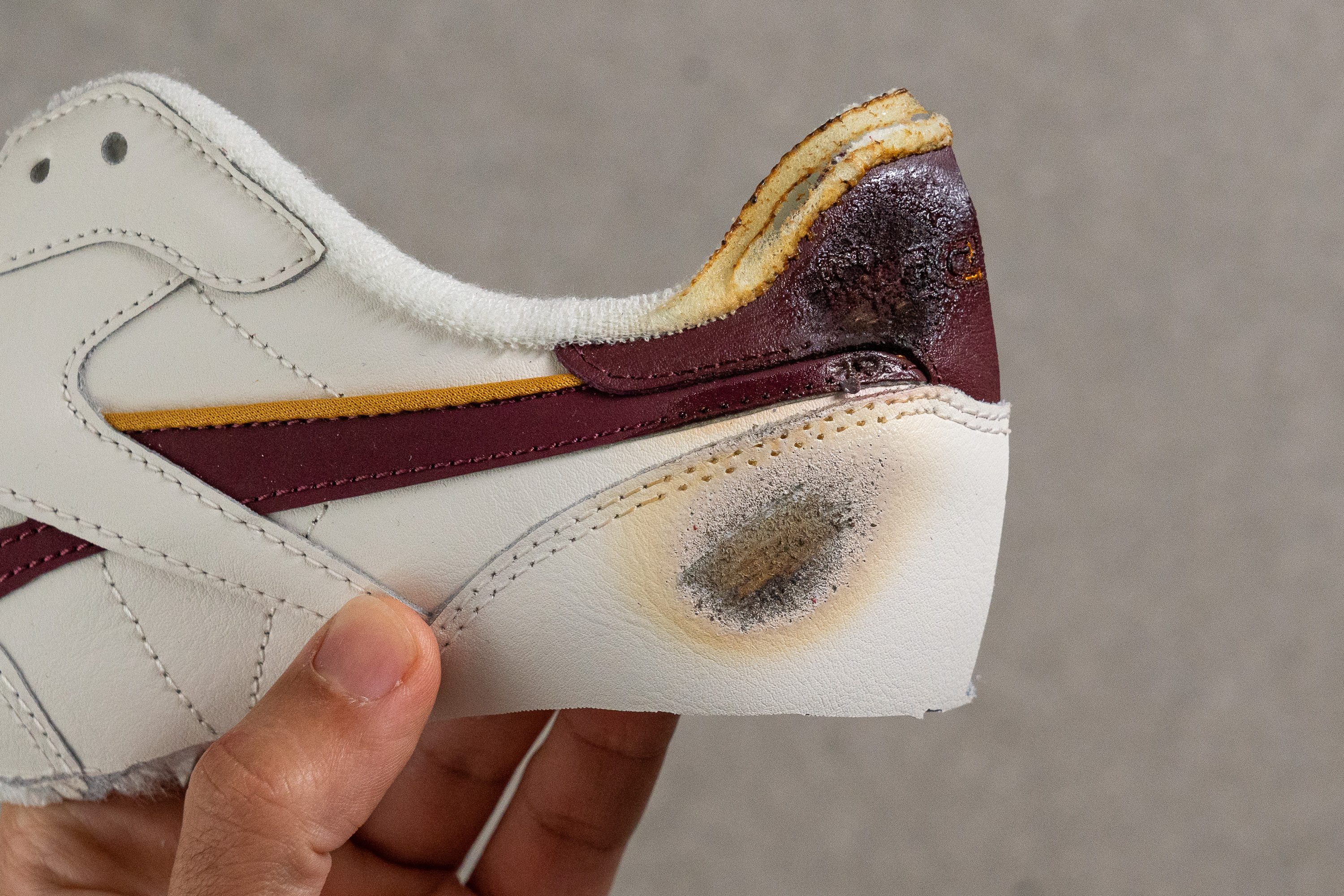
| Classic Leather | Real leather |
Toebox durability
To test the durability of the toebox, we fired up our Dremel to 5K RPM and set it against the Classic Leather with 3.2 N of force.
After twelve seconds of grinding, we found that we had done quite a substantial amount of damage to the toebox without actually piercing through it. This earns the Classic Leather a middle-of-the-road toebox durability score of 3 out of 5.
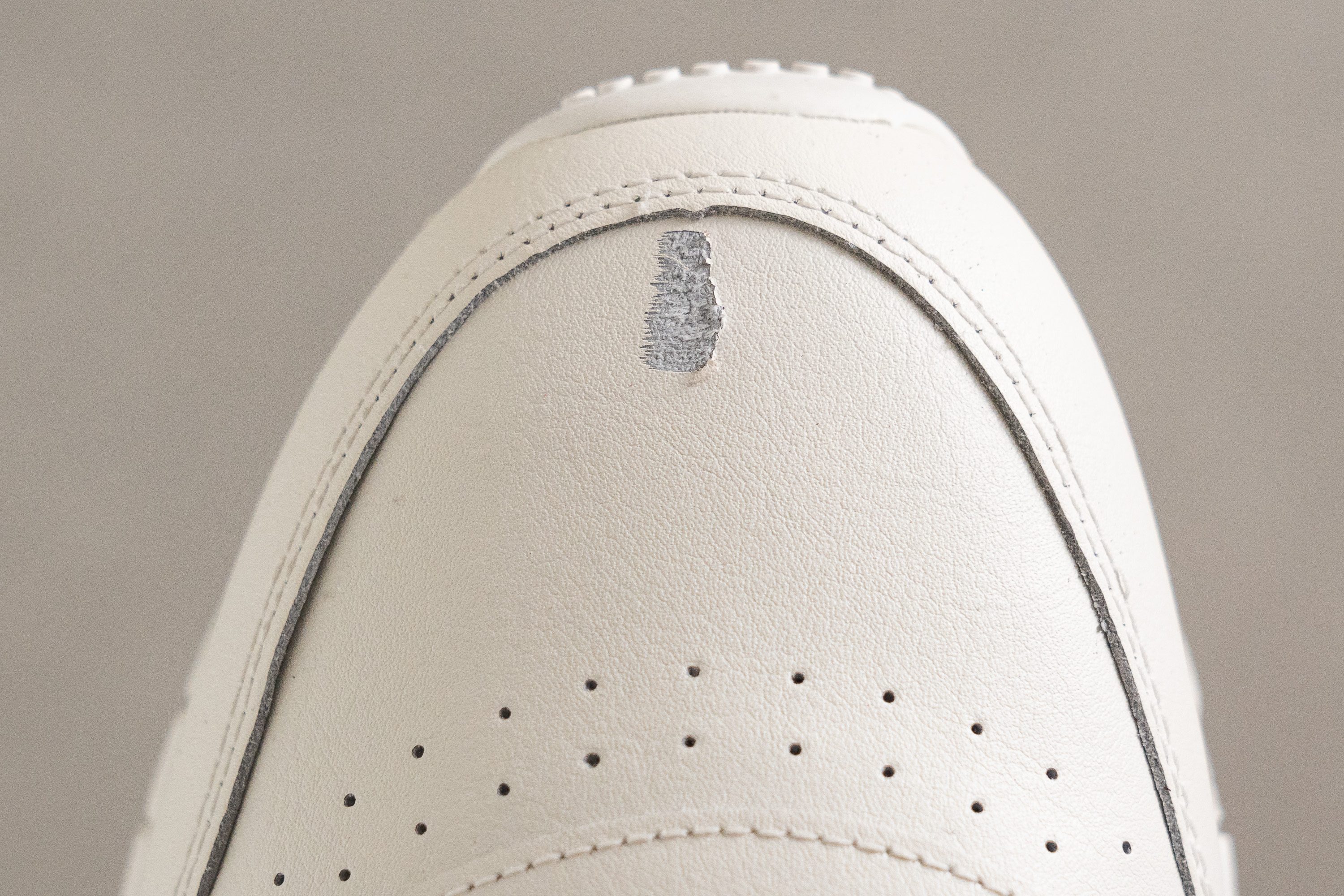
| Classic Leather | 3 |
| Average | 3.7 |
Heel padding durability
Next, we set our Dremel against the Classic Leather's heel counter under the same parameter as the previous test, this time for only four seconds.
Despite the shorter test, our tool was able to wreak more damage to the heel collar, eating away at the relatively scant foam back there. This earns the Classic Leather a less-than-stellar heel padding durability score of 2 out of 5.
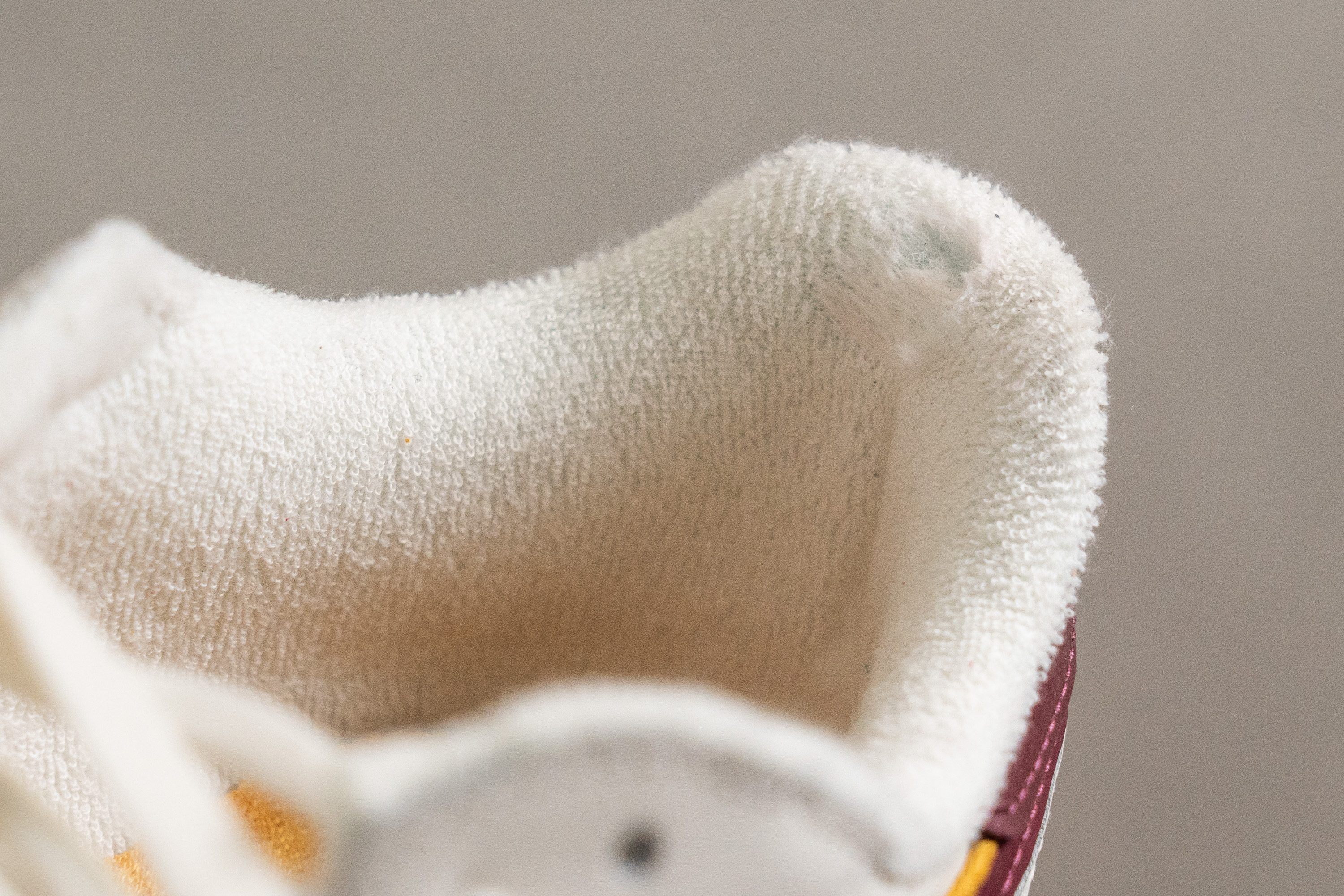
| Classic Leather | 2 |
| Average | 3.2 |
Outsole hardness
The Classic Leather's outsole is about as hard as our current lab average, giving us a durometer reading of 82.8 HC. This usually implies a good balance of grip and durability.
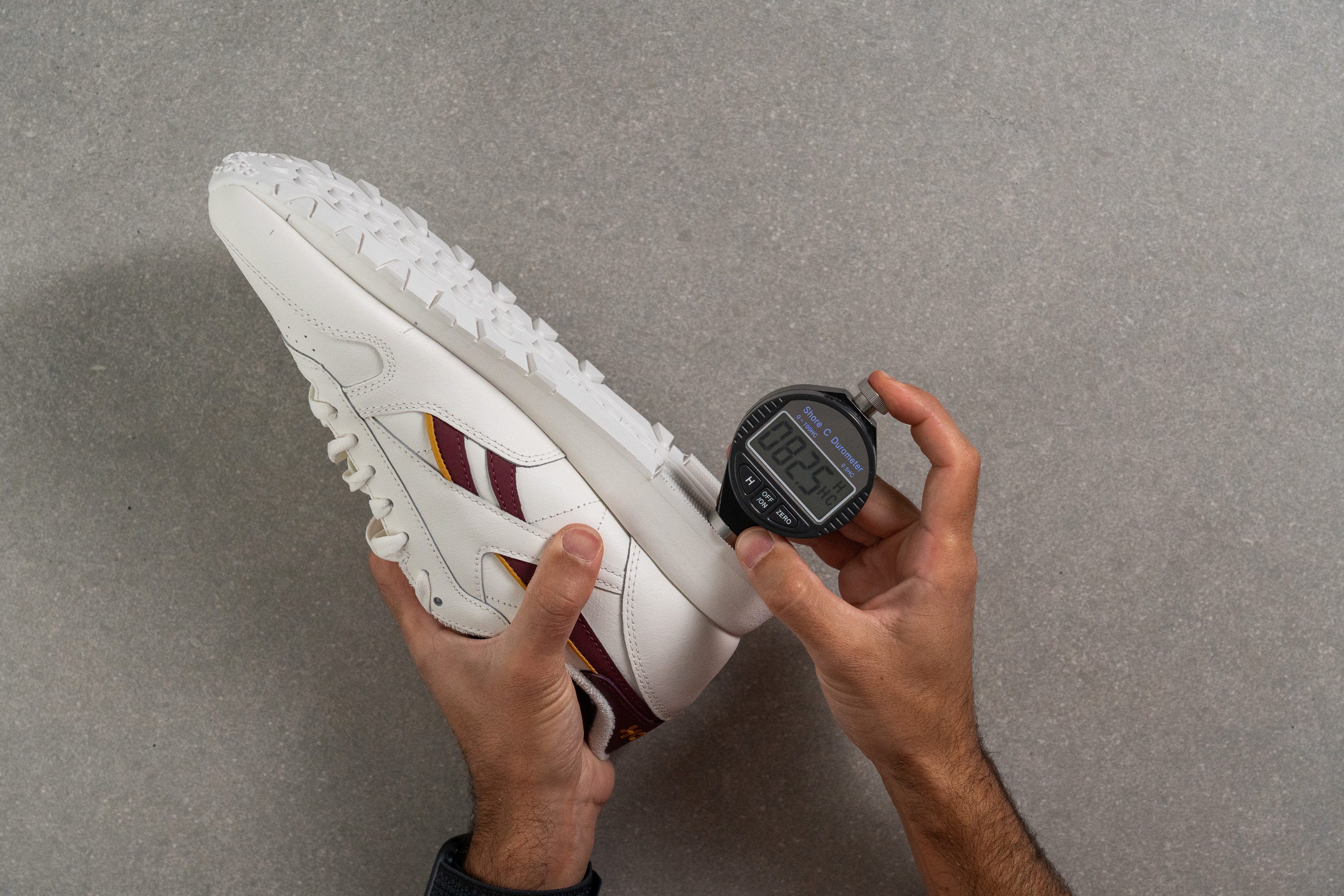
| Classic Leather | 82.8 HC |
| Average | 85.7 HC |
Outsole durability
This time spinning at 10K RPM, we set the Dremel against the Classic Leather's outsole with 3.2N of force.
We then used a tyre tread gauge to assess the aftermath, we found that 0.8 mm of rubber was shorn off by our tool, making the Classic Leather ever-so-slightly more durable than average. This gives us no real cause for concern regarding the durability over the lifetime of this shoe with normal use.
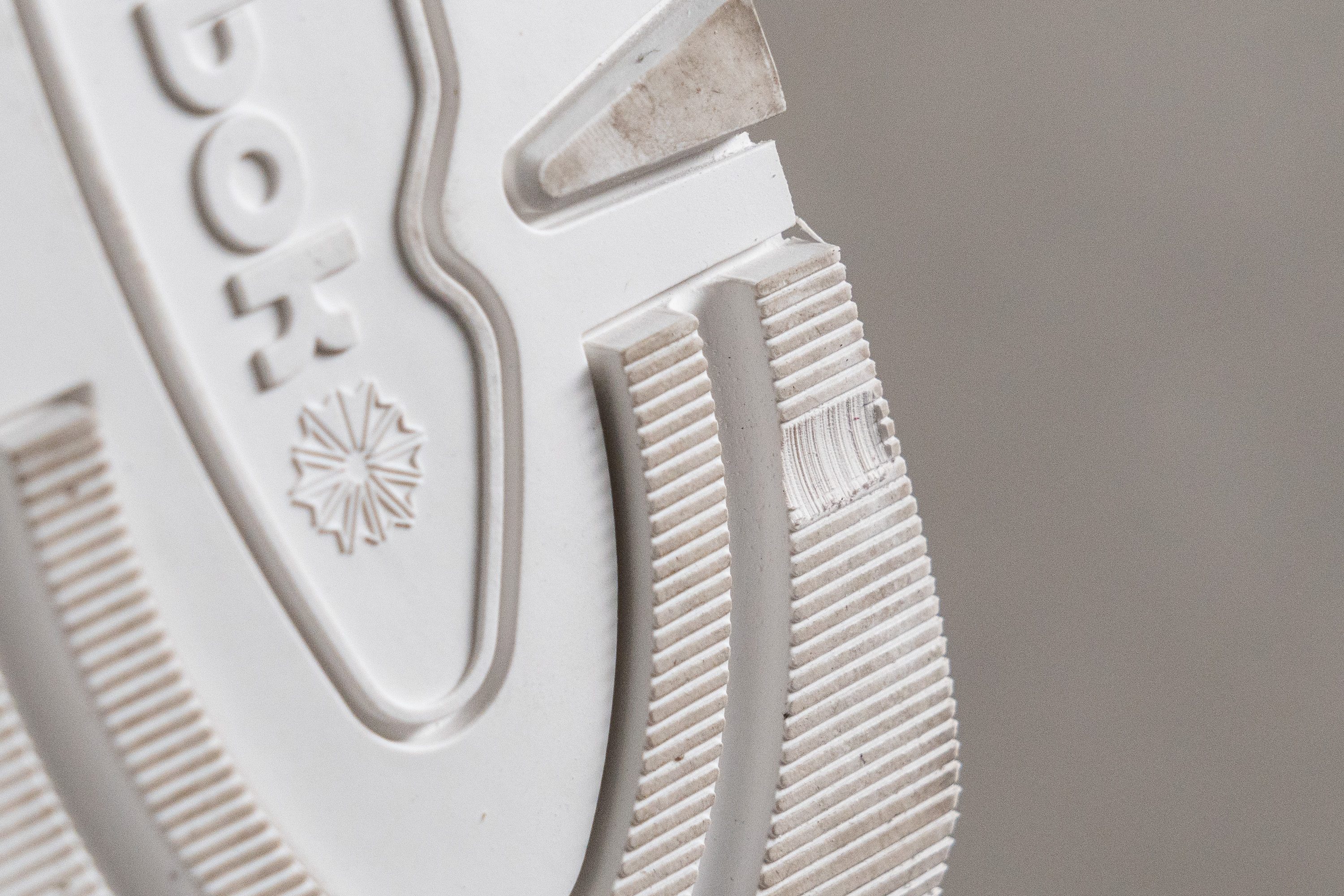
| Classic Leather | 0.8 mm |
| Average | 1.1 mm |
Outsole thickness
Using our caliper, we measured the Classic Leather's outsole to be 6.6 mm thick. This gives us more material than average to wear through before killing this sneaker.
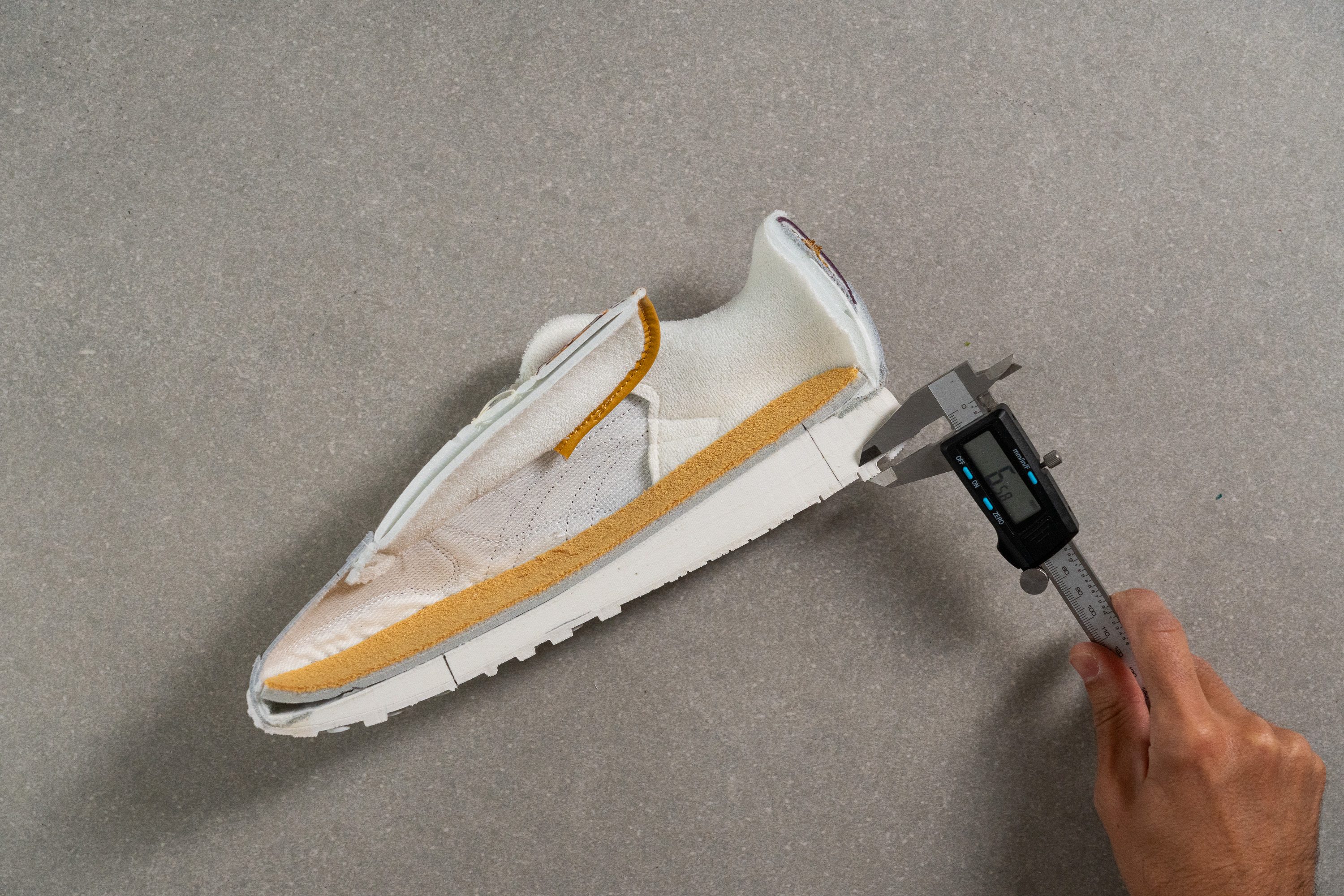
| Classic Leather | 6.6 mm |
| Average | 5.3 mm |
Misc
Insole thickness
The Classic Leather's insole isn't quite as thick as our current lab average at only 4.4 mm thick, though still provided us with a padded enough surface within the shoe to keep our feet feeling comfy and supported.
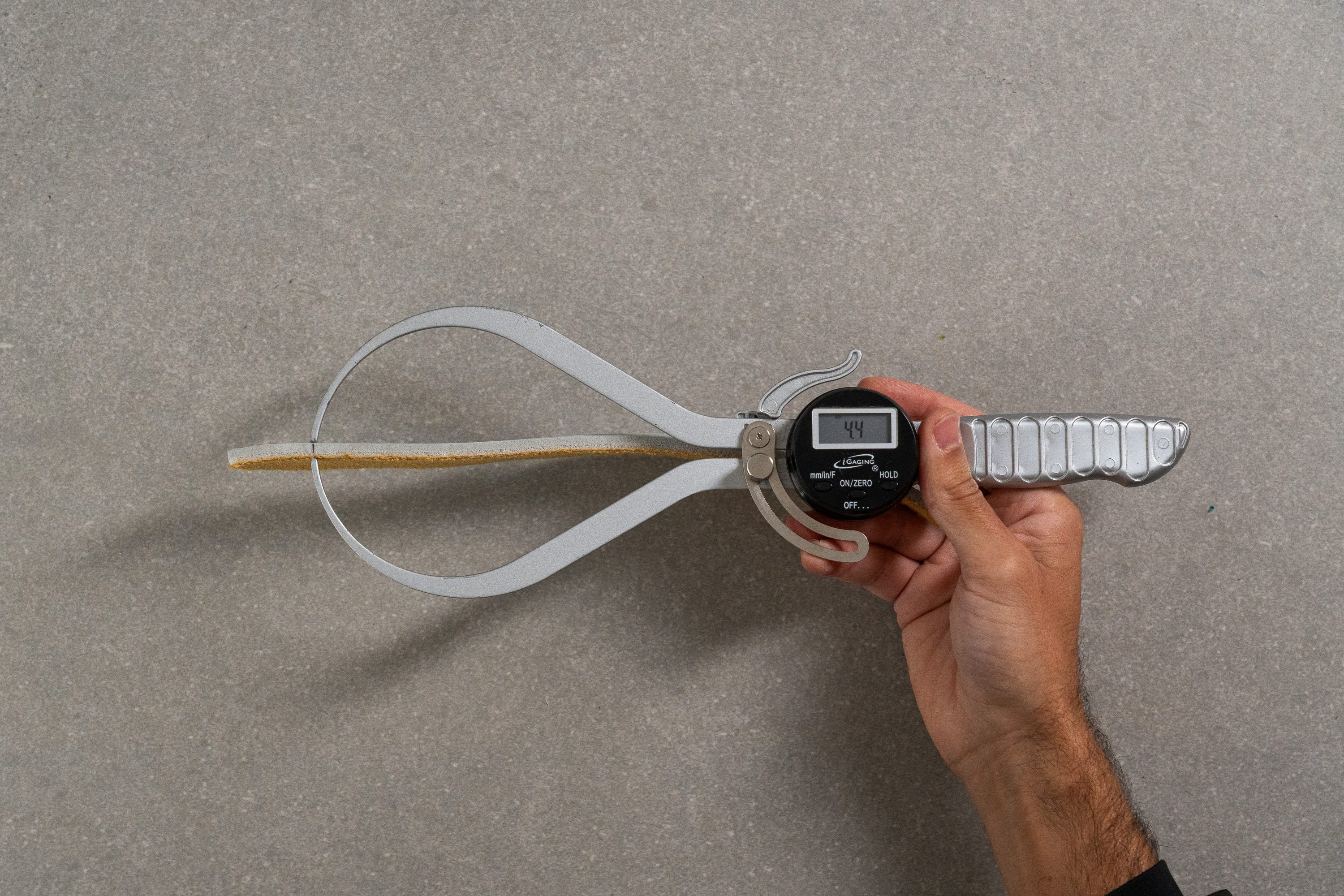
| Classic Leather | 4.4 mm |
| Average | 5.1 mm |
Removable insole
The Classic Leather's insole is fully removable, so using custom orthotics with this sneaker is possible.
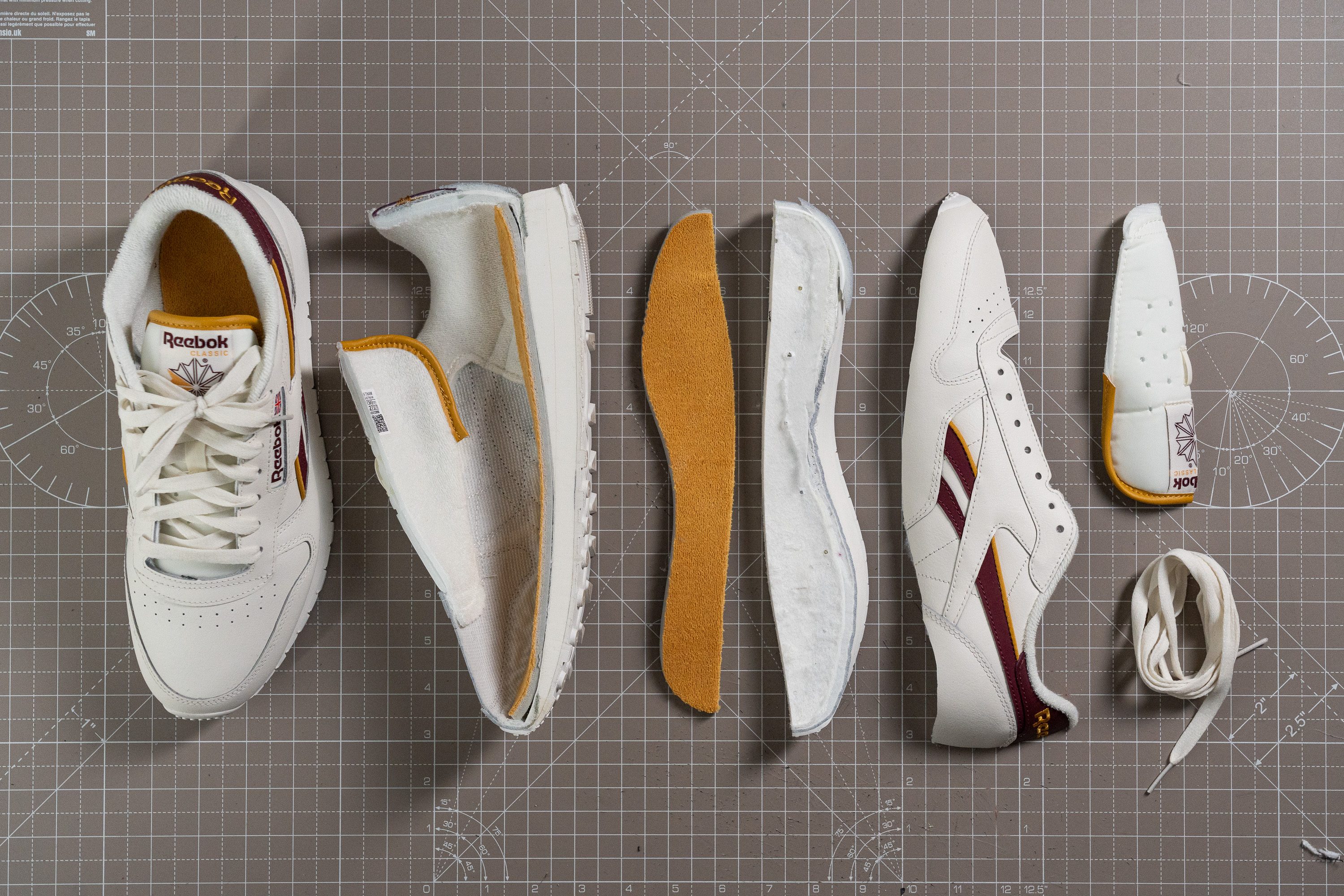
| Classic Leather | Yes |
Reflective elements
The Classic Leather doesn't feature any reflective elements.
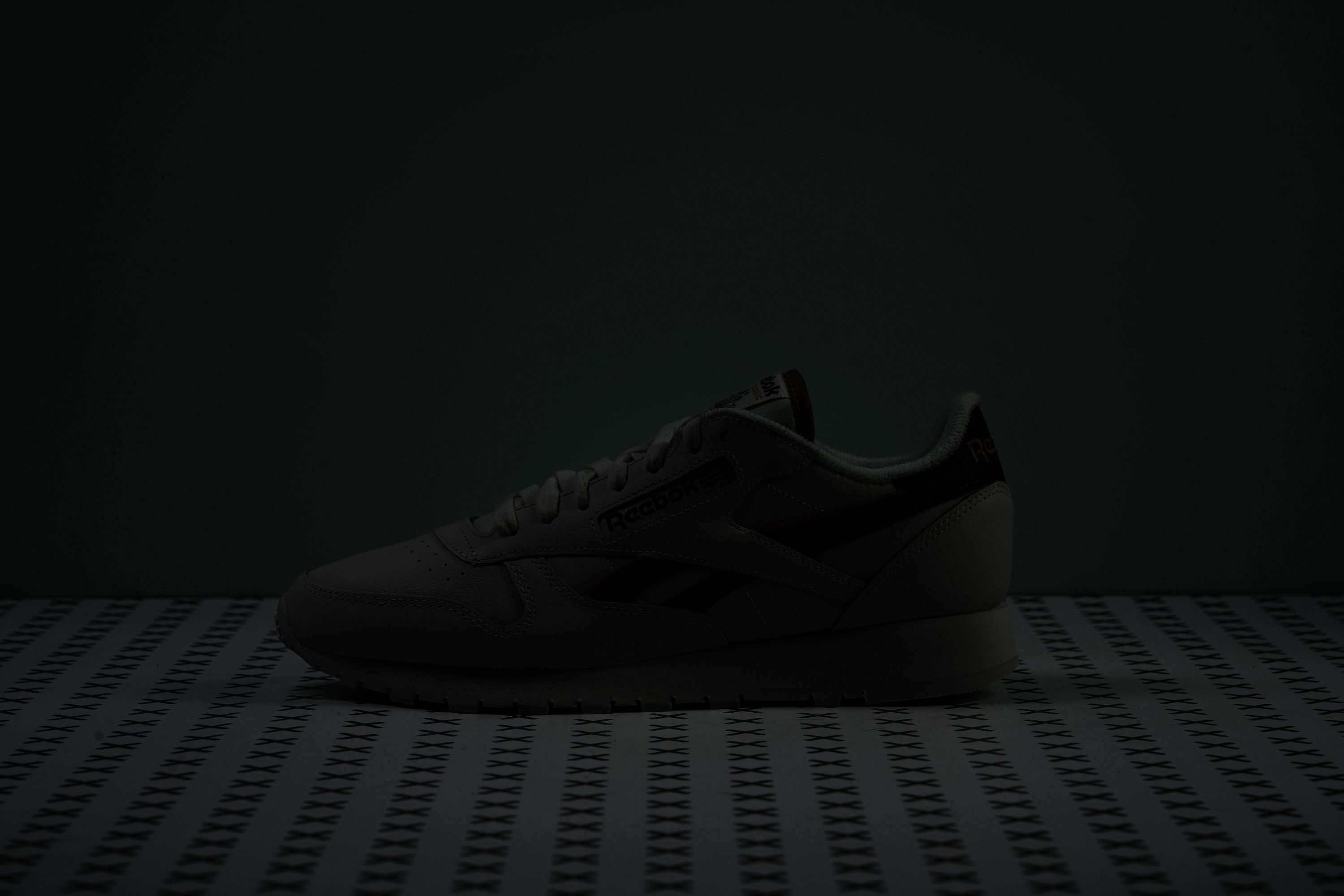
| Classic Leather | No |
Tongue padding
The Classic Leather's tongue falls within the average range at 6.6 mm thick according to our caliper measurements. This provides us with a good amount of comfort around the instep while also effectively protecting us from lace bite.
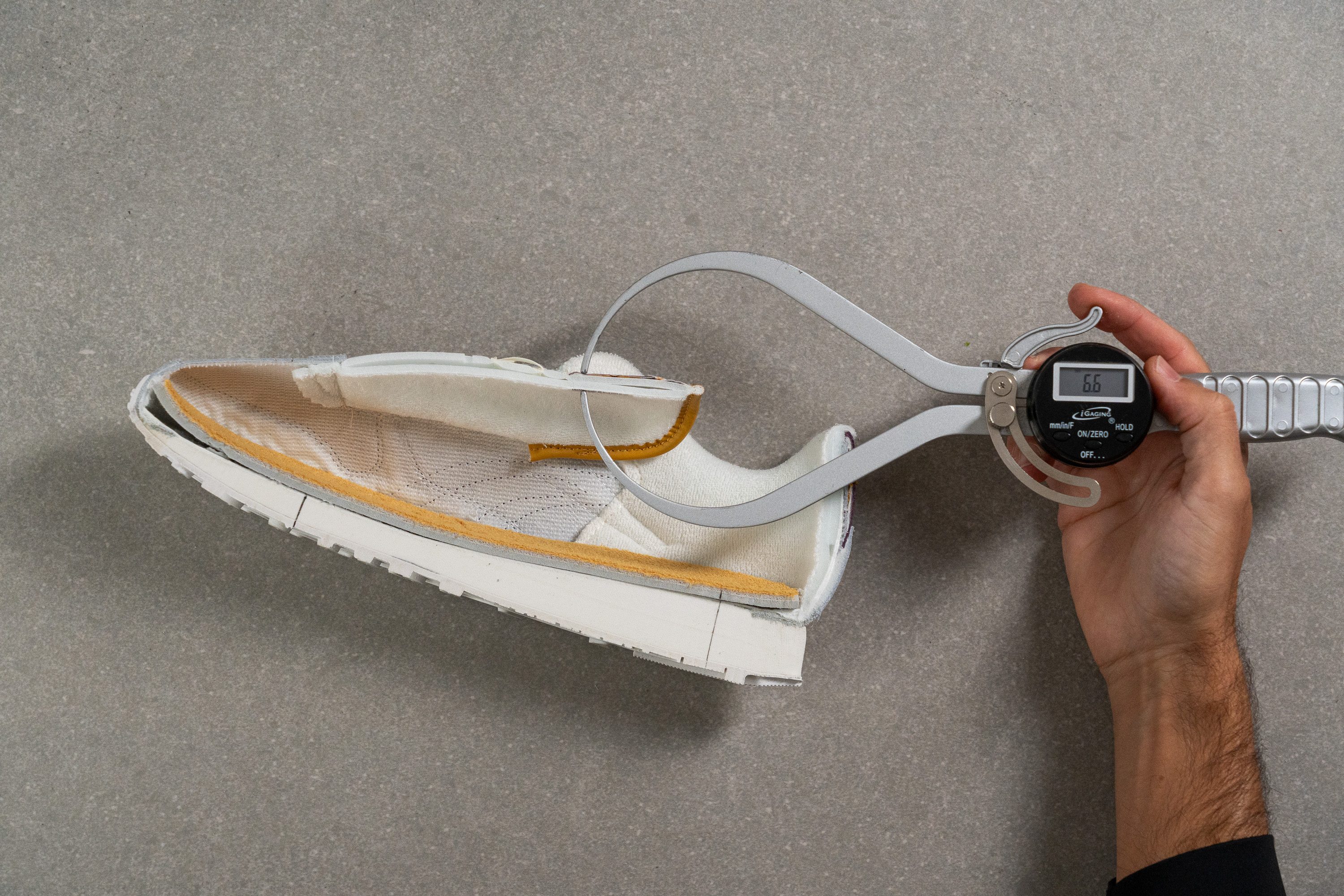
| Classic Leather | 6.6 mm |
| Average | 9.6 mm |
Tongue: gusset type
The tongue is non-gusseted, though we didn't experience any slips thanks in part to how stiff the leather is which helps keep it straight and rigid.
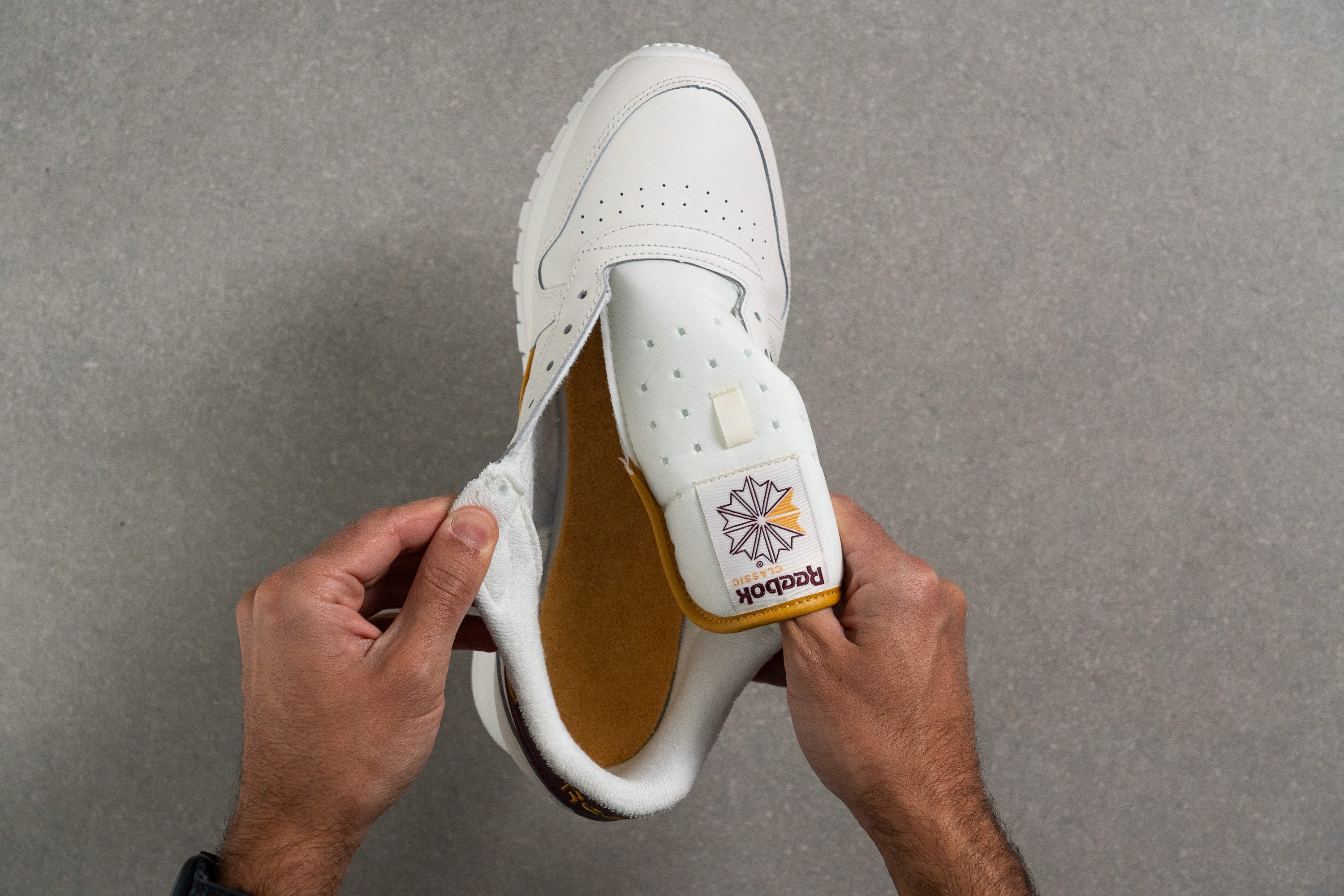
| Classic Leather | None |

